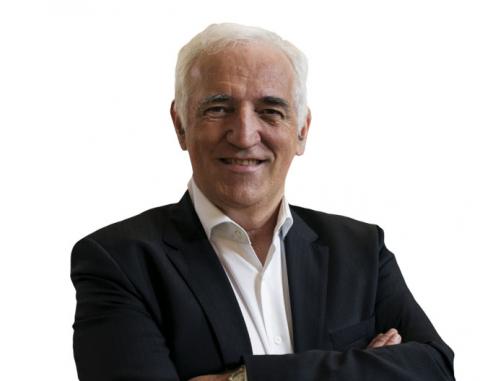Anyone looking at sites around CERN would be forgiven for thinking that we’re moving out, such is the scale of the undertaking we have just begun for LS2, and such is the volume of equipment that’s being removed from the accelerator tunnels and buildings for replacement or refurbishment. LS2 is a shutdown that is dedicated mainly to the LHC Injector Upgrade project, LIU, through which the entire injector chain is being prepared for the task of delivering high-brightness beams in readiness for the High-Luminosity LHC, HL-LHC, scheduled to start up in 2026. The 2000 or so people working on the accelerators in LS2 have their sights firmly set on the progressive restart of physics in experimental halls around the Laboratory in early 2021.
LIU got under way in 2015, and much has already been accomplished. From the construction of an entirely new linear accelerator, Linac 4, to the installation of a ground-breaking RF solid-state power amplifier system and new beam dump for the SPS and the delivery of a powerful 200 MVA transformer at Prévessin, new installations have been appearing across the CERN landscape, ready to be brought into play during LS2. Nothing is being left untouched. From the venerable Proton Synchrotron and its Booster to the SPS, every machine upstream of the LHC will be transformed over the next two years.
The final touches to the meticulous LIU planning process were made earlier this month at a very productive workshop in Montreux, mapping out the road to physics resuming in 2021. By the time this happened, however, LS2 work was already in full swing. At the PS Booster, work got under way to ready the machine to receive beams at 160 MeV instead of 50 MeV, and to accelerate them to 2 GeV instead of 1.4 GeV. In the PS itself, the removal of 43 of the machine’s 100 bending magnets started, while at the SPS, the replacement of some 400 kilometres of cabling began and components of the acceleration system were brought to the surface for refurbishment. All these are major undertakings in their own right, and give a glimpse of the scale and complexity of the task at hand. As LS2 progresses, dedicated articles in the Bulletin will keep you up to speed - this week’s article describes the ground-breaking solid-state power amplifiers that will be powering the SPS RF cavities.
Although LIU is the main focus of LS2, there’s much else going on. Next year, for example, the first set of two 11-tesla dipole magnets using cable based on the niobium-tin compound, Nb3Sn, will be installed at Point 7 of the LHC. This is a technology that has long been studied at CERN. It was considered in the early days of the LHC project, but was not sufficiently mature at the time. Now that the technology has evolved, this magnet will be the first of its kind to be installed in a particle accelerator. When the HL-LHC starts up, the final focus magnets for ATLAS and CMS will use niobium-tin cable, as will the four dipoles at Point 7. Niobium-tin technology supports higher current density, allowing higher fields to be generated, leading in turn to a sharper focus at the experiments, and to greater bending power in the four dipoles, which have to produce the same bending power over their 11-metre length as the standard LHC dipoles produce over 15 metres in order to free up space for new collimators. In LS2, the consolidation of the LHC main dipole by-pass diodes will also be achieved, and some 20 superconducting magnets will be exchanged.
As with LS1 before it, LS2 has an ambitious work plan. And as with LS1, our working mantra is: “safety first, quality second, schedule third”. We have a lot to do, we are well prepared, we will succeed, and we will succeed safely.

